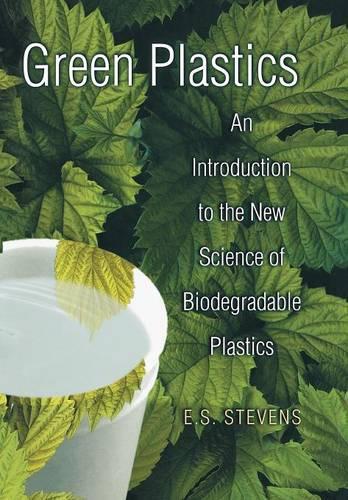
Green Plastics: An Introduction to the New Science of Biodegradable Plastics
(Hardback)
Publishing Details
Green Plastics: An Introduction to the New Science of Biodegradable Plastics
By (Author) E. S. Stevens
Princeton University Press
Princeton University Press
5th March 2002
United States
Classifications
Professional and Scholarly
Non Fiction
Plastics and polymers
668.4
Physical Properties
Hardback
248
Width 152mm, Height 235mm
510g
Description
Plastics are everywhere. Bags, bank cards, bottles, and even boats can all be made of this celebrated but much-maligned material. Yet most of us know next to nothing about plastics. We do know that they are practical and cheap--but they also represent a huge environmental problem, for they literally take ages to decompose. In this engaging book, E.S. Stevens tells us everything we have always wondered about plastics and of the efforts, in America, Europe, and Asia, to develop a new breed of environmentally friendly plastics. He points to a possible future where plastics will no longer be made of petroleum, but of plants. The first two chapters assess the increased use of plastics as a relatively new alternative to other materials. The third chapter introduces us to their impact on the environment and strategies for their disposal or recycling. The next two chapters cover basic concepts and terms used in polymer sciences and provide some basic chemistry. With these fundamentals in tow, the author compares how petroleum-based and biological polymers are made, and the various ways in which they decompose. He acquaints readers with the emerging technologies, their commercial viability, and their future. Finally, instructions are given for preparing basic bioplastics using readily available materials. Nonspecialists will find Green Plastics a concise introduction to this exciting interdisciplinary topic--an introduction otherwise not available. For students it provides easy entry to an area of science with wide appeal and current importance; for teachers, excellent background reading for courses in various sciences. The prospect of depleted fossil fuel supplies, and the potential benefits of bioplastics to the environment and to rural areas that could supply the raw materials, make this book a compelling presentation of a subject whose time has come.
Reviews
"As its subtitle promises, [this book] does offer an introduction to the subject, along with a brief overview of the chemistry of plastics. Rounding out the book are a helpful glossary, a reading list for those interested in exploring the topic in greater depth and an appendix of recipes for making your own bioplastics from common ingredients."--American Scientist "A very nice introduction to the field of biodegradable polymers."--Choice "The flow of topics is natural and intuitive. Definitions and diagrams are generally plain, precise, and easy to understand... This book is recommended for college-level students as well as for the general reader with little formal background in chemistry who desires an up-to-date presentation on current and future trends in plastics."--Armen S. Casparian, Science Books & Film
Author Bio
Eugene Stevens is Professor of Chemistry at the State University of New York at Binghamton. He has conducted research on biopolymers for more than thirty years and has published more than one hundred papers dealing with the conformational behavior of biomolecules, a topic he has explored through chiroptic methods.
